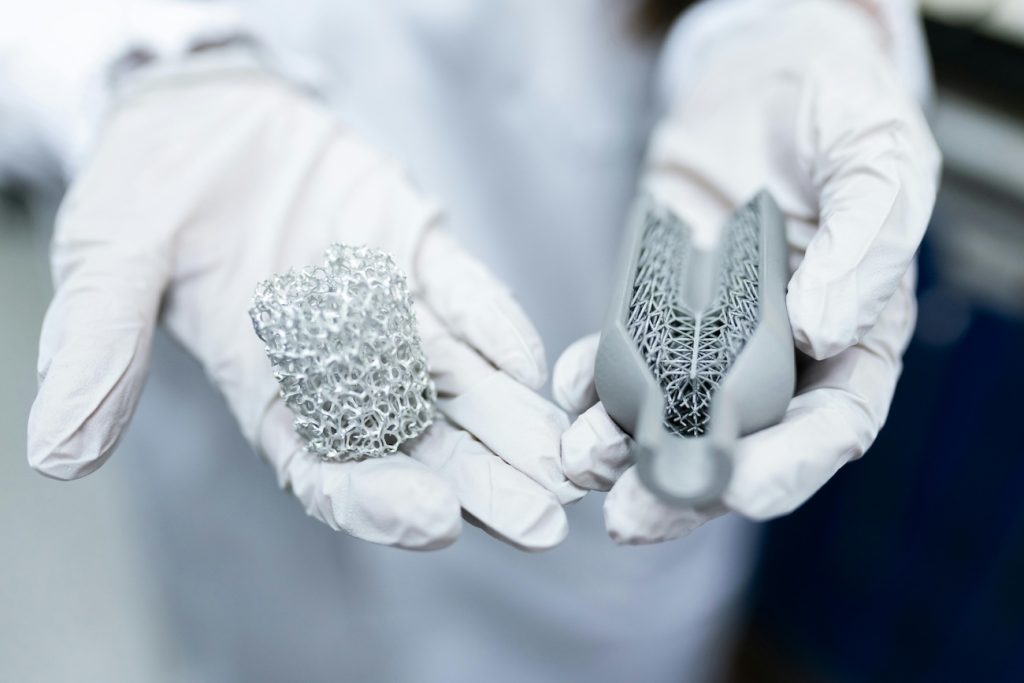Post curing 3D printing is what turns “good” prototypes into production-ready components. Post-curing completes polymer reactions and locks in dimensional stability, allowing repeatable results across builds. In additive manufacturing (AM), it’s a step that happens in carefully engineered industrial ovens, not on the printer. Temperature control, airflow, time at setpoint, and load configuration make the difference.
What Post Curing 3D Printing Does
During printing, many resins and thermosets are only partially cured. The shape exists, but the network isn’t fully formed. Post-curing completes cross-linking and stabilizes material properties. Strength improves. Creep decreases. Dimensional stability tightens.
Think of curing as disciplined thermal processing for 3D printed parts. Heat energy, applied uniformly and for the right duration, pushes the reaction to completion. The result is consistent performance under load and temperature. And parts behave like the datasheet says they should.
Why Industrial Ovens Determine AM Results
Printers establish geometry. Industrial ovens finish the job. With uniform temperature and programmable soaks, they complete the cure. ±1 °C uniformity keeps every region advancing together, protecting dimensional stability and increasing strength.
Consistency depends on airflow. High-volume, recirculating systems sweep heat across complex geometries and nested builds, while baffles and ducting help reduce hot spots and cold corners. Atmosphere is determined by the chemistry involved and the application. Class A configurations handle vapors from reactive resins, with inert-atmosphere options to limit oxidation for sensitive materials. Clean-room, HEPA-filtered models support medical and electronics workflows.
The Time, Temperature, and Atmosphere Recipe
For post curing 3D printing, profiles can vary by material and will depend on time, temperature, and atmosphere.
- Temperature range. UV-curable resins often post cure around 60–80 °C; epoxy-based systems may require 120–180 °C. The resin supplier would provide guidance on temperatures.
- Ramp and soak. Controlled ramp-to-setpoint prevents distortion. Hold long enough for full conversion without overshooting.
- Atmosphere. Some polymers benefit from inert gas; others only require clean, dry air.
Ramp and soak can be difficult to master. Small parts can tolerate faster ramps. But massive or filled parts need gentler ramps and longer soaks.
Fixturing and Airflow Create Dimensional Stability
Parts can shift as internal stresses relax. Fixtures keep edges straight and hole patterns true. Flat, rigid plates work for thin panels. And use contoured supports for curved shells. A simple idea with a big payoff.
Airflow works with fixturing. Balanced, recirculating air reaches shadowed areas and internal passages. That cuts temperature differences across ribs, bosses, and lattices. Less variation equals better dimensional stability, including on high-performance composites cured over printed tooling.
Choosing Industrial Ovens for AM Parts and Tools
Selecting heat equipment for post curing 3D printing is a process decision as much as a purchase decision.
| What to evaluate | Specify / ask for | Impact on AM outcomes |
|---|---|---|
| Uniformity spec and mapping | Verified ±1–2 °C across the usable load space; routine temperature mapping at production load | Even cure through the whole part; tighter geometry and fewer rejects |
| Airflow design | Horizontal or vertical recirculation matched to part geometry and racking; baffles/ducts to eliminate stagnant zones | Uniform heat transfer into cavities and lattices; reduced hot/cold spots |
| Temperature range and control | Sufficient temperature headroom; stable PID control; programmable ramps and soaks | Prevents overshoot and distortion; repeatable properties run to run |
| Atmosphere options | Clean, dry air by default; inert purge capability when oxidation is a risk | Better surfaces and color; protects sensitive polymers and composites |
| Safety and compliance | Class A configuration for volatiles where applicable; proper venting; over-temperature protection | Safer operation and code compliance for resin systems that outgas |
| Cleanliness | HEPA filtration; clean-room compatibility; low-outgassing interior finishes | Supports medical/electronics builds; keeps surfaces clean during cure |
| Data and recipes | Multi-step profiles; batch records; audit trail; easy export/integration | Traceable cures for QA; faster setup and fewer operator errors |
| Serviceability | Calibration support; accessible components; spare-parts availability; field service | Higher uptime; predictable maintenance and consistent performance |
Choose correctly, and AM teams can scale from one-off prototypes to daily production. The same industrial ovens can run post cures for photopolymers at mid-temperatures in the morning, then support composite tool cures in the afternoon with a different profile.
Post-curing is the bridge between printed shape and service-ready properties. Repeatability comes from a repeatable load: standardized spacing with consistent fixture materials. And run the same recipe with logging. With uniform temperature and balanced airflow, properties land on spec and cycle times stay predictable. That’s how AM teams move from one-offs to daily production.
If you’re weighing oven choices or fine-tuning a profile, Despatch can match uniformity to airflow and provide controls that prove each run.


